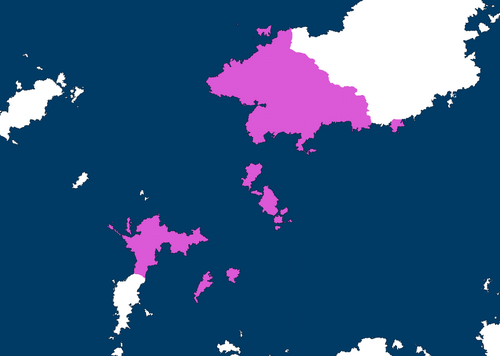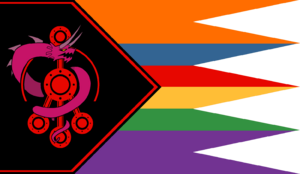The Amarian Combine
Jump to navigation
Jump to search
The Amarian Combine
The Amarian Combine (colloquially Greater Amaria or The Combine) is a federation between the three Sonhelian nations of Umetuč, Alftheimn and Aucasus. The Amarian Combine's territory spans from the northern islands of the continent of Syrovoho to the western regions of Kitkras, bordering Geranhul-ya.
The Amarian Combine Amrjane Nekjagoxo | |
|---|---|
 Map of the Amarian Combine in 2408 | |
| Capital | Tålakjemeqa (in Umetuč) |
| Official languages | Tokagebac, Alftheimnish |
| Recognised regional languages | Tokagebac, Cruiniiral, Ax tot Yonn, Dj̆ty, Xopukuli, Muippelore, Mtàd Tokagebac, Alftheimnish, Aucusian Alftheimnish |
| Ethnic groups | Tokagebac, Cruiniiral, Ax tot Yonn, Dj̆ty, Xopukuli, Muippelore, Mtàd Tokagebac, Alftheimn, Aucusian, Geran, Kironian |
| Demonym(s) | Amarian (Umetučite, Alftheimnish, Aucusean) |
| Government | Federal parliamentary authoritarian republic |
• Head Coordinator | Slabjo Čiček |
| Population | |
• Estimate | 198,915,215* |
• Density | 41/km2 (106.2/sq mi) |
| GDP (nominal) |
|
• Total |
|
• Per capita |
|
| HDI |
|
| Currency | K̨jagod (₦) |
| Date format | DD/MM/YYYY |
| Driving side | doesn't |
History
The Amarian Combine was founded by its current members (Umetuč, Alftheimn and Aucuses) in 2405 afther the decision to extend the functions of the already existing Amarainist Economic Block (established the year before). The Amarianist Constitution was signed by the heads of the three states in Tålakjemeqa in Jenuary of 2405, thus officially establishing the Combine as a political and economic entity.

